You can position the labels by defining a new arc as suggested in https://stackoverflow.com/a/8270668/2314737 and then applying the centroid function.
I defined a new arc newarc with an inner radius equal to 2/3 of the outer radius.
var newarc = d3.svg.arc()
.innerRadius(2 * radius / 3)
.outerRadius(radius);
Here's the JS code:
var width = 300;
var height = 300;
var svg = d3.select("body").append("svg");
svg.attr("width", width)
.attr("height", height);
var dataset = [11, 13, 18, 25, 31];
var radius = width / 2;
var innerRadius = 0;
var arc = d3.svg.arc()
.innerRadius(0)
.outerRadius(radius);
var pie = d3.layout.pie();
var arcs = svg.selectAll("g.arc")
.data(pie(dataset))
.enter()
.append("g")
.attr("class", "arc")
.attr("transform", "translate(" + radius + ", " + radius + ")");
//Draw arc paths
var color = d3.scale.category10();
arcs.append("path")
.attr("fill", function (d, i) {
console.log(d);
return color(i);
})
.attr("stroke", "white")
.attr("d", arc);
var newarc = d3.svg.arc()
.innerRadius(2 * radius / 3)
.outerRadius(radius);
// Place labels
arcs.append("text")
.attr("transform", function (d) {
return "translate(" + newarc.centroid(d) + ")";
})
.attr("text-anchor", "middle")
.attr("fill", "white")
.text(function (d) {
return d.value + "%";
});
Here is a working demo: http://jsfiddle.net/user2314737/kvz8uev8/2/

